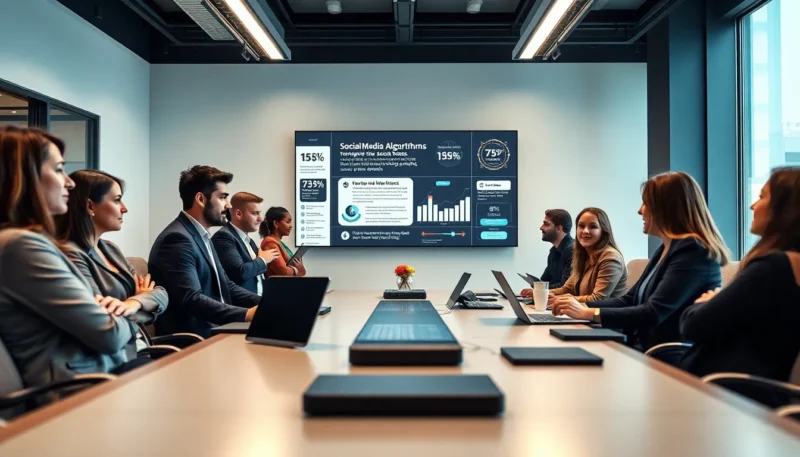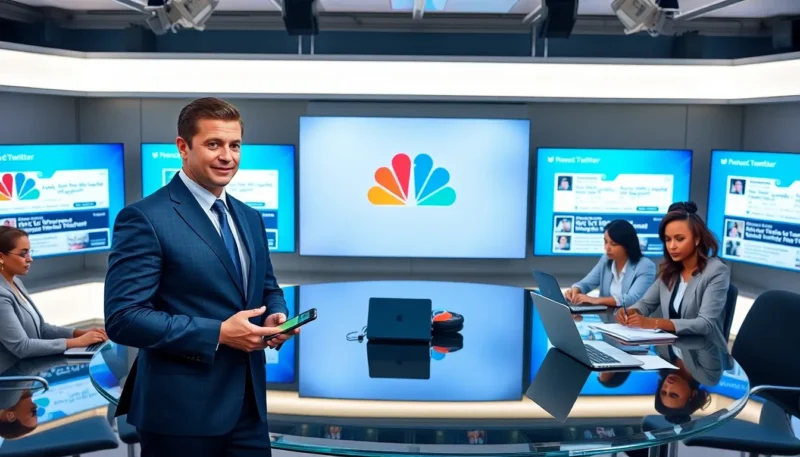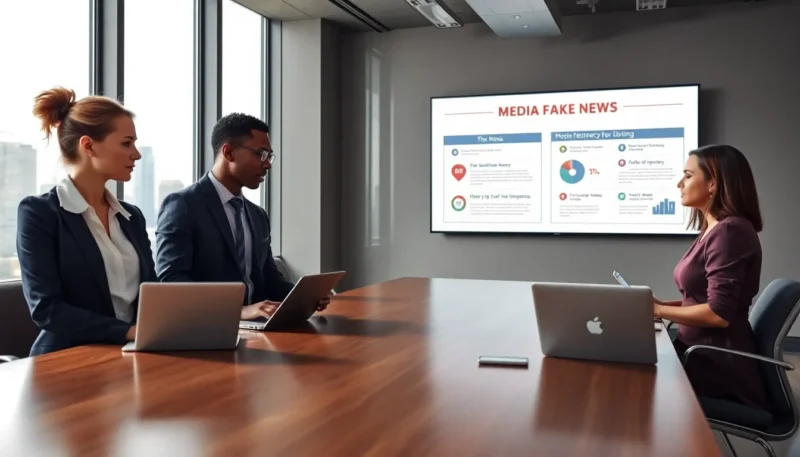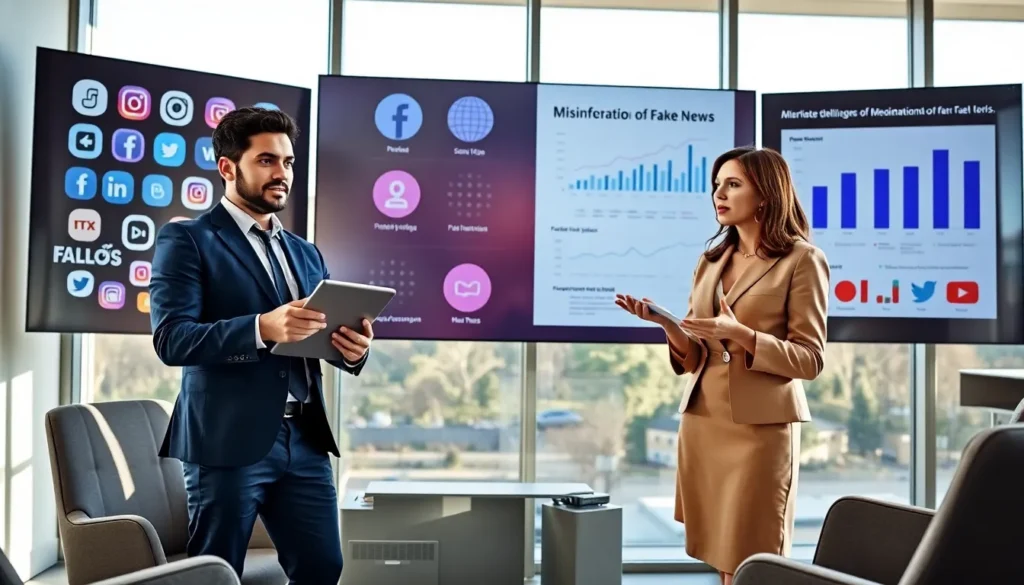
In a world where a sneeze can be viral, fake news spreads faster than popular memes. As you scroll through your social media feed, it’s easy to get swept up in sensational headlines and questionable claims. But how many of those posts are actually rooted in reality? This article will unravel the tangled web of social media and fake news, shedding light on definitions, impacts, and ways to combat misinformation. Strap in: it’s about to get real.
Social Media and Fake News
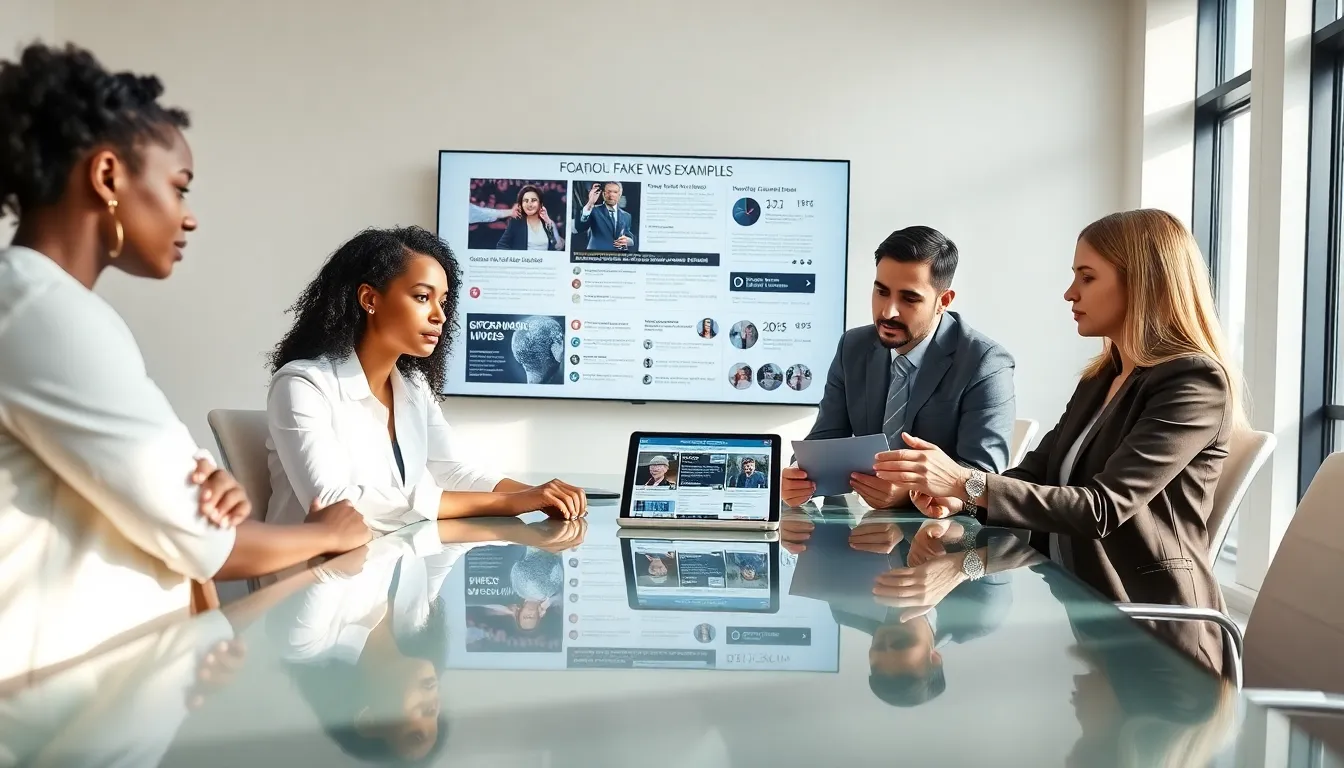
Definition of Fake News
Fake news refers to misinformation and disinformation presented as news. It can take various forms, from entirely fabricated articles to sensationalized headlines that distort facts. Understanding what constitutes fake news is crucial for savvy social media consumers. It’s like recognizing a mirage in the desert, once you see it for what it is, you stop chasing it.
Types of Fake News
Fake news can be categorized into several types:
- Clickbait: Sensational headlines designed to generate clicks rather than inform.
- Propaganda: Information deliberately spread to influence public opinion.
- Satire: Humorous takes on real events that can sometimes be misconstrued as factual.
- Deepfakes: Manipulated video or audio that misrepresents the truth.
Knowing the different types helps individuals avoid falling prey to misleading information.
The Role of Social Media Platforms
Algorithmic Influence on Information Spread
Social media platforms leverage sophisticated algorithms to tailor content to users’ preferences. While this personalization enhances user experience, it can also create echo chambers. Within these digital environments, misinformation flourishes. When algorithms prioritize engagement over accuracy, users often end up consuming a constant stream of misleading content.
Case Studies of Misinformation on Social Media
Several infamous cases highlight how misinformation has spread on social media. During the 2020 pandemic, false claims about cures and virus origins circulated wildly, leading to public panic and confusion. In another instance, misinformation during elections swayed public opinion and even influenced voter turnout. These examples underline the dire consequences of unchecked fake news.
Impact on Society and Individual Behavior
Consequences of Misinformation
Misinformation can distort public perceptions and erode trust in legitimate news sources. As people encounter more fake news, they may become cynical or disengaged, leading to an uninformed populace. This disconnect poses dangers, especially in democratic societies where informed citizen participation is essential.
Cognitive Biases and Information Consumption
Cognitive biases further exacerbate the issue of fake news. Confirmation bias leads individuals to seek out information that supports their existing beliefs, reinforcing misconceptions. This mindset makes it challenging for people to recognize fake news, as they often dismiss contradictory information as false. Understanding these biases is vital for promoting more critical consumption of information.
Combating Fake News on Social Media
Strategies for Users
Users have a vital role in combating fake news. Here are effective strategies:
- Verify Sources: Always check the credibility of the source before sharing.
- Fact-Check: Use reliable fact-checking websites to confirm claims.
- Engage Critically: Approach sensational news with skepticism, especially if it aligns too neatly with your own views.
Role of Education and Media Literacy
Education plays a pivotal role in the fight against misinformation. Incorporating media literacy programs in schools can equip individuals with critical skills to discern real news from fake. Such initiatives empower citizens to navigate the digital landscape wisely, ensuring they become informed consumers of information rather than passive recipients.







